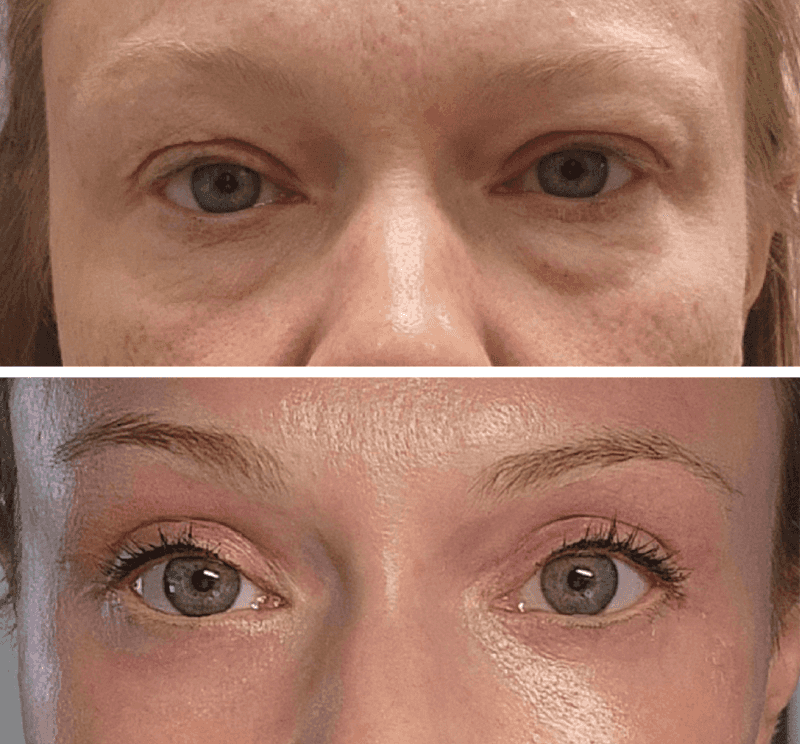As we age, changes occur, especially in the areas around our eyes. Sun damage and gravity work against us, creating fullness in both the upper and lower eyelids that make us look tired, sick, or old. What we see in the mirror doesn’t reflect the way we feel. People ask whether we’re tired, or sick.

Though we may tell ourselves we feel fine, hearing these seemingly innocent comments can have a detrimental effect on our sense of wellbeing. It’s frustrating to hear that the way you look doesn’t reflect the way you feel.
The Historical Journey of Eyelid Surgery
Take an interactive tour of the history of eyelid surgery.
If you’re feeling bad about how your face has aged, take comfort in knowing you’re not alone. People have been looking to surgery to improve their appearance since the days of Ancient Greece! In fact, the term “blepharoplasty” comes from the Greek term blepharon, which means eyelid, and plastics, which means formed. What we recognize now, they recognized then: Our eyelids frame our eyes and send a powerful message about who we are.
It’s hard to imagine plastic surgery being performed 2000 years ago, but it was: In fact, the first writings about eyelid surgery date back to 30 AD., when Aulus Cornelious Celsus described a procedure. When the Arabs invaded Alexandra six centuries later, they weren’t just looking for land and treasure. A famous text written by Ali ibn Isa of Bahdad, Tadhkirat al-Kahhalin, was a compilation of what the Greeks and Romans had been doing, including descriptions of upper eyelid blepharoplasty.
While cosmetic eyelid procedures have changed dramatically over the centuries, the goal remains the same; improving patients’ appearance, restoring vitality, and boosting self-confidence.
The Big Breakthrough in Eyelid Surgery
The first true breakthrough in eyelid surgery came in the 1980s, when Dr. Sterling Baker pioneered the use of the CO2 laser in eyelid surgery.
I’m very proud that I was mentored and trained by Dr. Baker. With his guidance, I learned how lasers seal nerves and blood vessels, and how using them causes less bruising and pain than scalpels. I studied the physics of lasers and how they impact the body: chromophores, coefficients of absorption, thermal relaxation time of tissue, ablation thresholds, and fluence were all important aspects of the technology I worked to master.
Over the years I’ve perfected using the laser in eyelid surgery that I first learned from Dr. Baker, improving on what I’d been taught. I began doing what others thought impossible – treating eyelid festoons and malar mounds, and pioneered a deep resurfacing procedure called RESET® Full Face. My practice became internationally renowned, but I never stopped studying or trying to improve and innovate new laser and resurfacing techniques.
I was pleased with the results that upper lid laser blepharoplasty surgery delivered: It removed excess skin and fat, eliminated heaviness or hooding, and created slight tightening. But the eyelid skin left behind still looked wrinkled or crepey.
The delicate skin of the upper lids and brow have presented a challenge since the earliest times of eyelid surgery, from 50 AD to the modern age. My successes with RESET Full Face and RESET Festoons had proven how dramatically lasers can improve the appearance and health of aged facial skin. I set out to find the levels of laser that would safely produce those same results for the eyelids.
It took years, but the result was worth the wait.
The RESET Upper Lid procedure virtually erases old skin, making room for new, healthy skin and providing remarkable improvement. It offers complete upper eyelid rejuvenation.
I’m proud of my creation and excited about entering it into the annals of eyelid surgery history. Most importantly, from now on I’ll be including it in every upper lid blepharoplasty that I perform. It will provide a true eyelid RESET for my patients.
